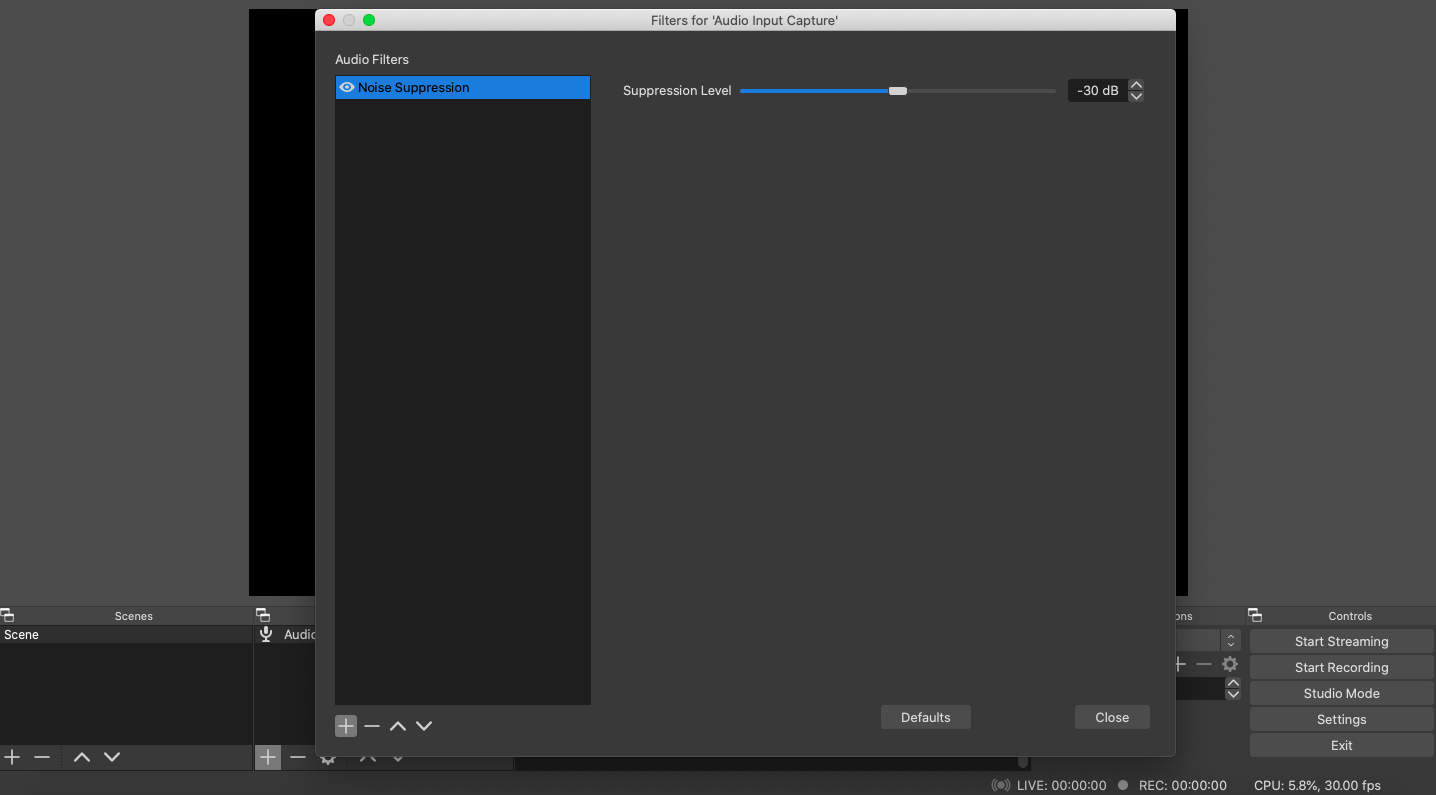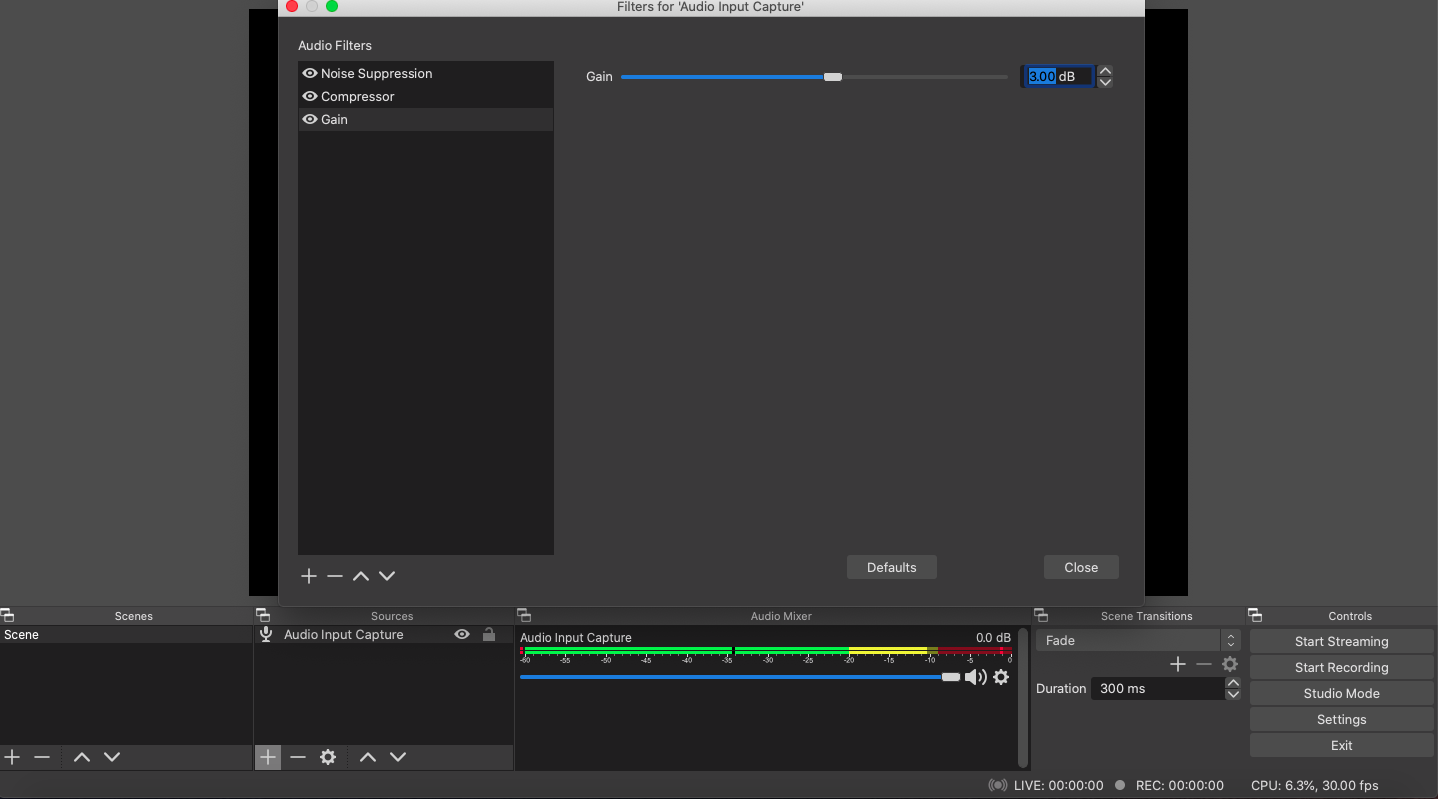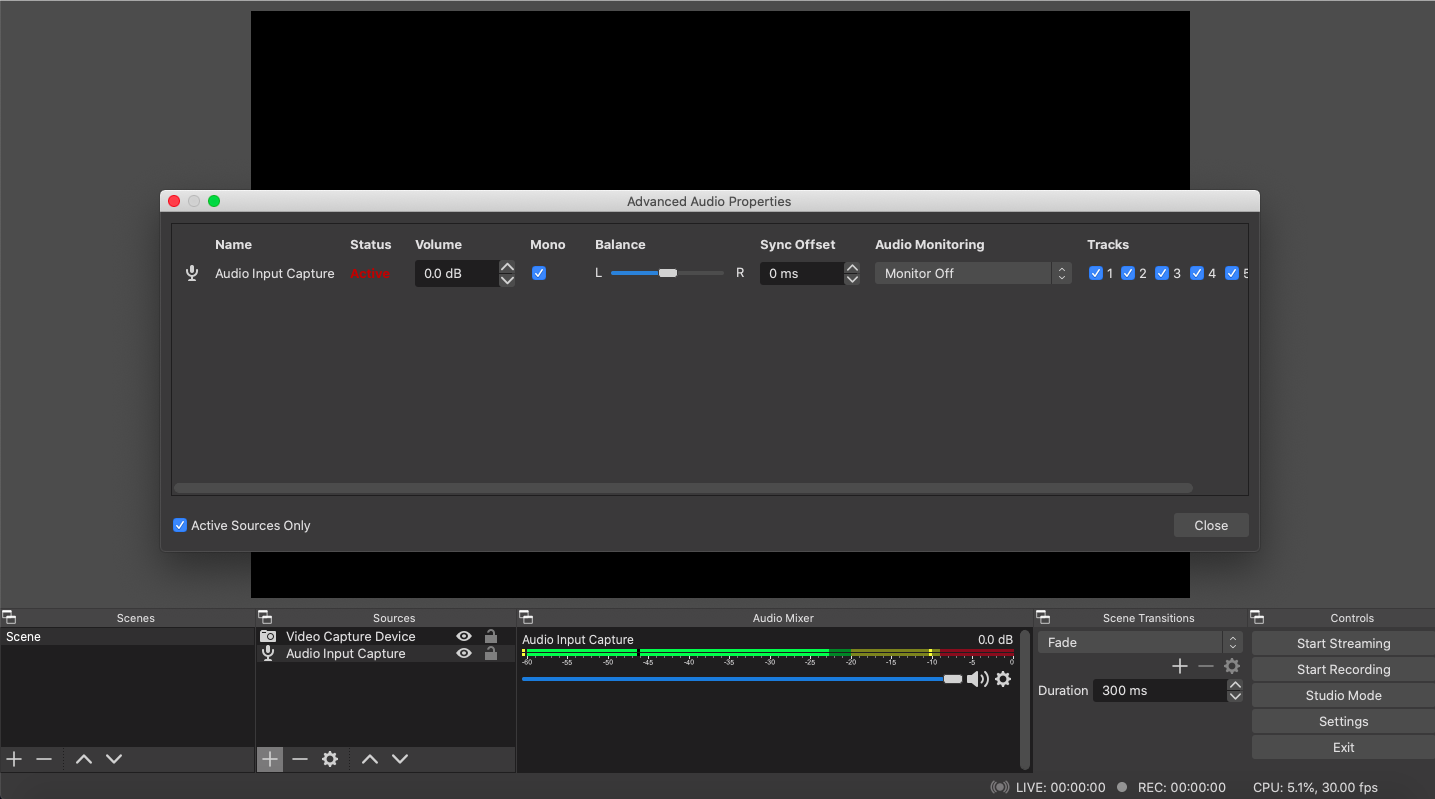How to troubleshoot OBS audio issues
If you’re more of a visual learner than a reader, this guide from Awall Digital is very useful. In fact, his entire playlist is highly recommended for working with OBS.
Troubleshooting Audio Issues with a Connected Microphone
Take a look at your microphone input and output in the OBS audio mixer. You want the level to be at -3 db (3 lines to the left of 0, in the red). You can try adjusting the volume bar in the audio mixer first. If that doesn't work, go through the following steps.
Step 1: Check your audio settings
In your OBS profile and scene collection, click “settings” in the bottom right corner OR click the OBS dropdown and select Preferences. The settings will appear. Select “Audio”
Under the “General” section, we recommend setting your sample rate to 44.1 kHz and selecting Stereo as your channel.
Under “Devices,” make sure everything is disabled.
Leave all other settings alone and click “OK”
Step 2: Add filters to your audio source
Select your microphone audio source under Sources. Then, in the Audio Mixer window, click the cog/gear icon next to the volume button and below the red bar.
Select “Filters.” To add a filter, click the “+” button on the left side of the window.
We recommend the following filters:
- Noise Suppression
- Compressor
- Gain
- Filter
Step 3: Add the noise suppression filter
Click the “+” button and select noise suppression. Selecting it should be enough, but if your audio is still sounding busy, adjust the level up and down until it improves.

Step 4: Add the compressor filter
Click the “+” button and select compressor. You can leave the levels for this filter at their default settings.

Step 5: Add the gain filter
Gain is a tool to adjust your volume output (how loud your audio comes across for the viewer). Be careful not to overdo it here to spare your viewers’ eardrums. Slowly adjust it up or down while watching the audio mixer. Remember -- you want to get the sound level to about -3 db, in the red.

Step 6: Add the limiter filter
This filter can help make sure you don’t blow out the audio, even if you overdid it on the gain. Set the threshold to -3 db.

That should do it! Try testing your new mic setup with a video source and click “start recording” to get a sample broadcast. Once you're happy with your video and audio sound, you're ready to start livestreaming.
Troubleshooting Audio and Video Sync Issues
Sometimes, your audio may get out of sync with your video. To fix this, you’ll want to adjust your audio speed just a bit to sync with your video source.
Step 1: Open your advanced audio properties
With your audio source selected, go into the audio mixer window and click the cog/gear to the right of the volume button and select “Advanced Audio Properties.”

Step 2: Give your audio a 220ms sync offset
You should see both your video and audio source. In the audio source “sync offset” window, enter 220. Then test your audio and video. Keep adjusting the offset number until it’s perfect.

Switch Your Audio From Mono to Stereo
With your audio source (or sources) connected and selected in OBS, you should see two lines stacked one on top of the other. If you don’t, moving your audio from mono to stereo should fix it.
You can test it by putting on headphones or earbuds and listening to the sound. If you are hearing audio through only one ear, this is definitely the issue
To adjust, click the cog/gear next to the volume button in the volume mixer window and choose advanced audio preferences. If the box is checked under the word “Mono”, uncheck the box and then see if both levels of the audio mixer begin moving with your microphone or audio source.

If you want a more in-depth tutorial on OBS, our Stream Coaches can help. They can explain the settings in detail and suggest the best choices for your individual streaming setup. Contact us at organizersupport@stellartickets.com.
